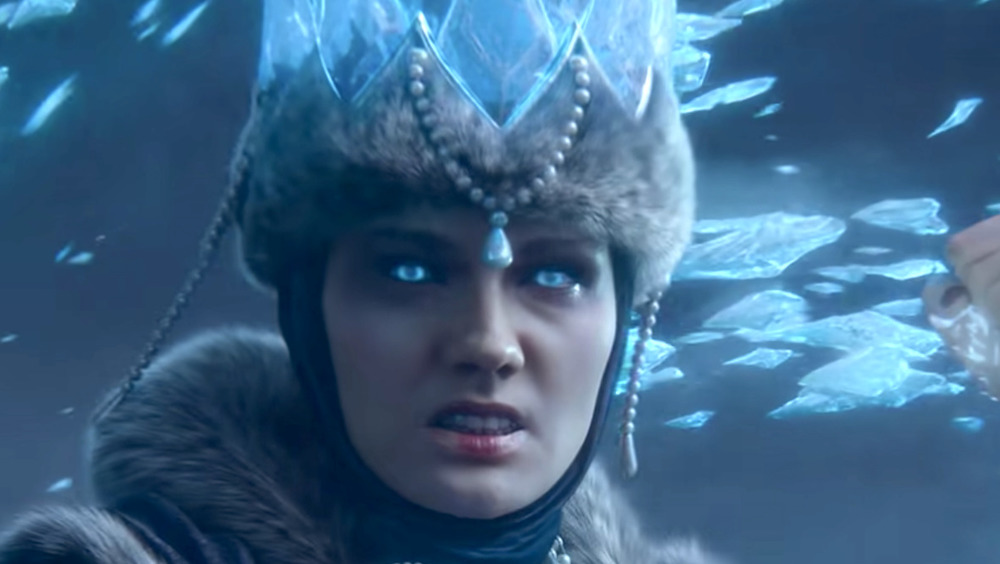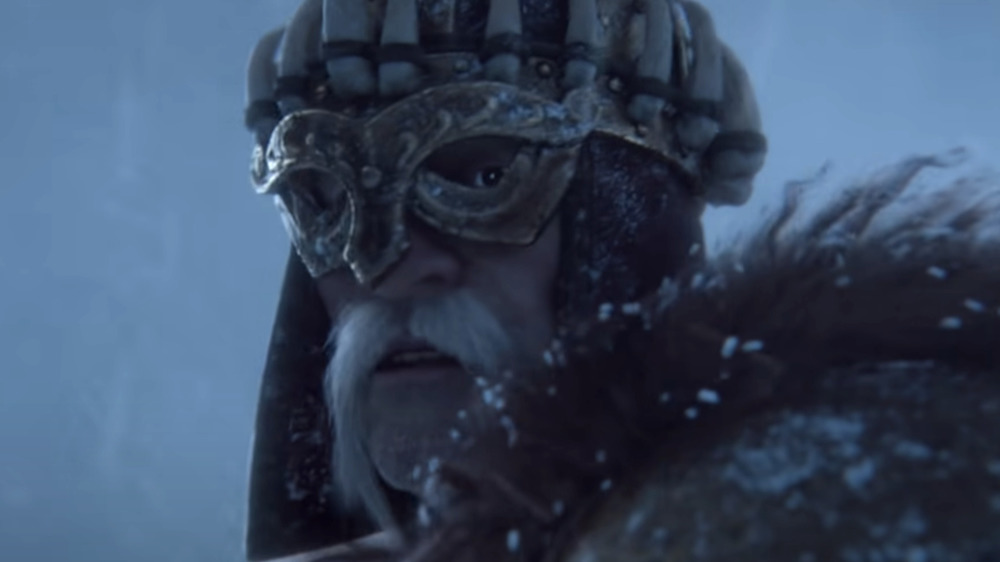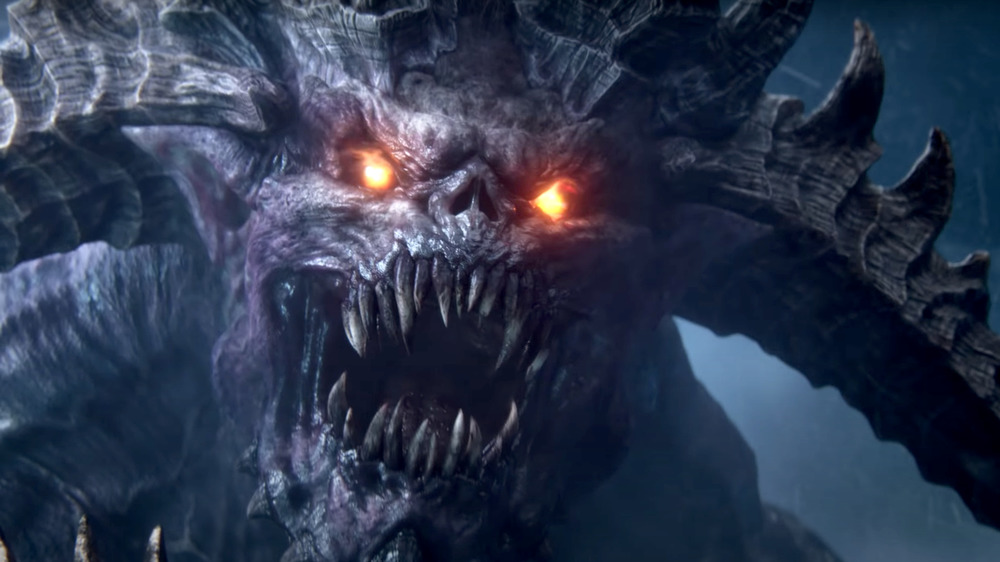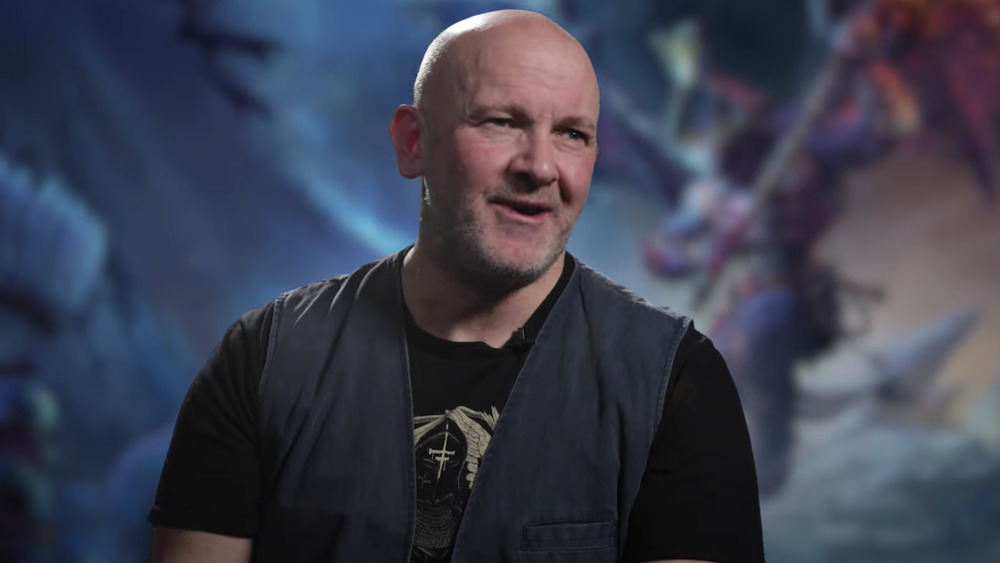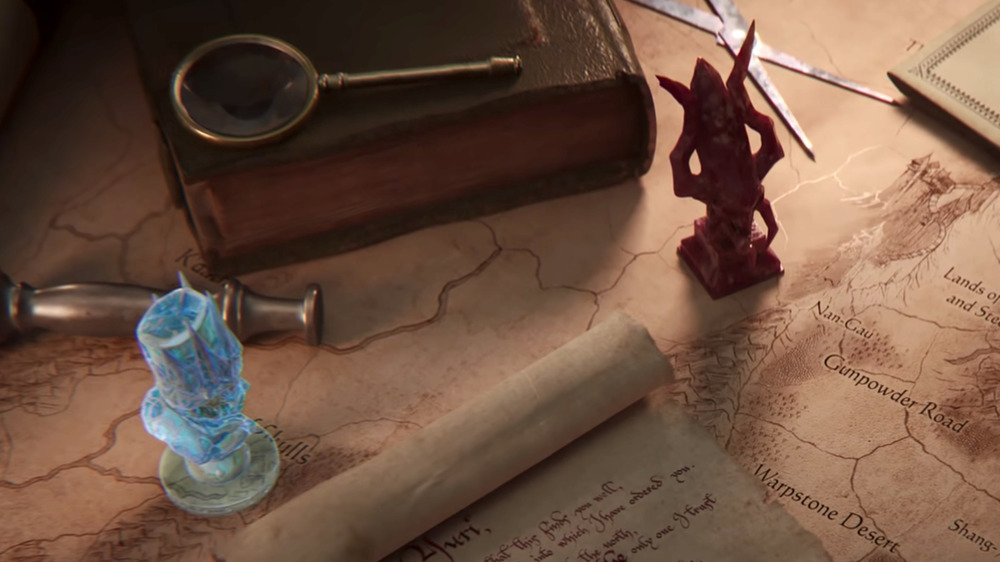What We Know About The New Factions In Total War: Warhammer 3
2021 is shaping up to be a good year for Warhammer fans. Not only is Darktide intended for release this year, but now a new Total War title is on the way. Developer Creative Assembly wowed audiences on Feb. 3 with a cinematic trailer for its upcoming real-time strategy game Total War: Warhammer 3, scheduled for release later this year. Not only did fans get some heavy metal demon-slaying action, they were also (re)introduced to two human sub-factions in the Warhammer fantasy universe that fans haven't heard from in a long time: the Kislev and the Cathay.
Previous Total War: Warhammer games have given players a pretty limited selection human civilizations to play with, with the Empire and the Brettonians, both loosely based on Rennaisance-era and medieval European militaries, respectively. The Kislev and Cathay have long been a part of the Warhammer fantasy lore, but neither have been explored in much depth, and never in any of the video games. Until now.
The new Total War: Warhammer III trailer gives fans a pretty good look at the Kislev. Despite taking a back seat in the Warhammer fantasy universe, the Kislev are a major player in one of the most consequential wars in Warhammer lore: the Great War Against Chaos.
Who exactly are the Kislev?
In the beginning of the Total War: Warhammer 3 trailer, you can see dark figures pulling corpses from a frozen landscape and loading them onto rickety wooden wagons. Spears glowing with cold blue magic part ways to allow a cloaked figure to enter an army's command tent. The commander, none other than the legendary Ice Queen Tzarina Katarin Bokha, draws her sword and joins the soldiers filing out of the encampment to face a horde of demons. The soldiers are equipped with curved blades, heavy furs, and ride enormous bears as cavalry.
These are the Kislev. They are a sort of fusion of Eastern European, Russian, and steppe tropes poured into one hardy stew. The Kislev are a self-reliant people located on the icy borders of the Chaos Wastes to the north. Though their relationship with other humans is often tenuous, they forged an alliance with the Empire in the Great War Against Chaos.
What the Kislev tell fans about the new game
The introduction of the Kislev gives fans some confusing clues about Total War: Warhammer III's setting. The trailer begins with a letter addressed to Tzarina Katarin: "My child, there is so much to tell you. Yet I have run out of time. The sacrifice I made was not enough."
Fans know that Katarin ruled over the Kislev following the death of her father, Tzar Boris Bokha. Kislev was in ruins after the Great War and Boris was killed while trying to purge the region from the remaining monsters, namely trolls. Just four years into Katarin's reign, Chaos mounted yet another attack, dubbed the "End Times," which is Warhammer Fantasy's most apocalyptic war, bringing all creatures and empires into the fray.
However, Creative Assembly has explicitly said Warhammer 3 is not set during the End Times. Creative Assembly's FAQ explained the game will be set during the reign of Emperor Karl Franz, which includes a period of Chaos assaults into Kislev. Dubbed the Storm of Chaos, these skirmishes occurred in the lead-up to the End Times. However, Storm of Chaos is supposedly no longer canon, leaving fans with a lot of questions.
What Total War tells fans about the Cathay
Not much is known about the Cathayan faction in Total War: Warhammer III. During the trailer, fans only got a single glimpse at a map with a name marked "Grand Cathay," as well as a green tabletop marker in the shape of a dragon.
"Cathay is going to be unlike anything you've ever seen in Warhammer, yet at the same time it's going to be classically Warhammer," Games Workshop project leader Andy Hoare said in a video. "You're going to see an entire part of the world that you've never seen before, populated by an enormous cast of characters units, monsters heroes, mythological figures, so it's going to feel entirely new, entirely novel, fantastical, and yet familiar at the same time."
In the same video, Games Workshop artist Mark Bedford said that there will be a lot of new ideas that people won't expect, too. "The Cathayan hierarchy will be a surprise to a lot of people," he added. Bedford described the process by saying that he's creating "new races, new ranges that have never been seen before," which could hint at even more new factions than just the Kislev and Cathay.
What do fans already know about the Cathay?
If the Empire, Kislev, and Brettons are any example, it appears that Games Workshop is borrowing heavily from real-world mythologies to create these societies. Cathay is no different. The word "Cathay" was used by real-life European explorers in the late Middle Ages to describe China, according to Brittanica. In the Warhammer lore, Cathay is described as a wealthy, populous empire, filled with golden pagodas, jade cities, gunpowder, and expensive exports.
There isn't much art in the existing Warhammer universe depicting the Cathayans (though that hasn't stopped fans from creating their own artwork and even rule books). But there are some maps. Despite its size, Cathay is isolated from the other human empires to its west, though there are other neighboring human empires (Nippon, the Kingdoms of Ind, and the Khuresh Hinterlands). Cathay is separated by a dark mountainous region known as the Ogre Kingdoms to the west, and an ocean to its east. However, not many specifics are known about any of these locations.
Total War: Warhammer 2 saw a bit of criticism for seemingly ripping gamers off with pricey DLC, but with all of this new content to draw from, Creative Assembly and Games Workshop have an opportunity to amaze fans in this next game.

